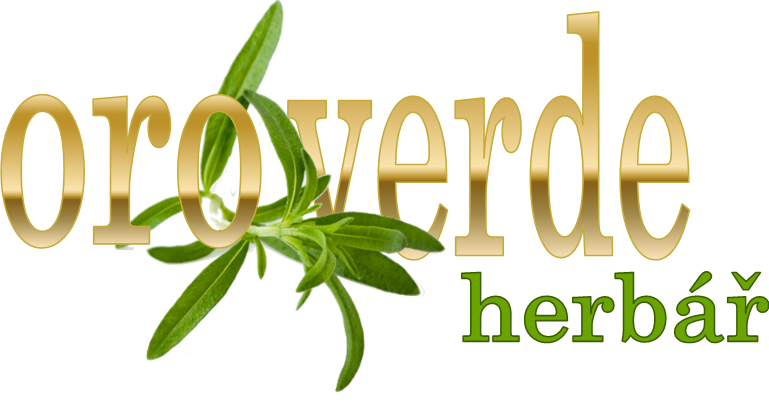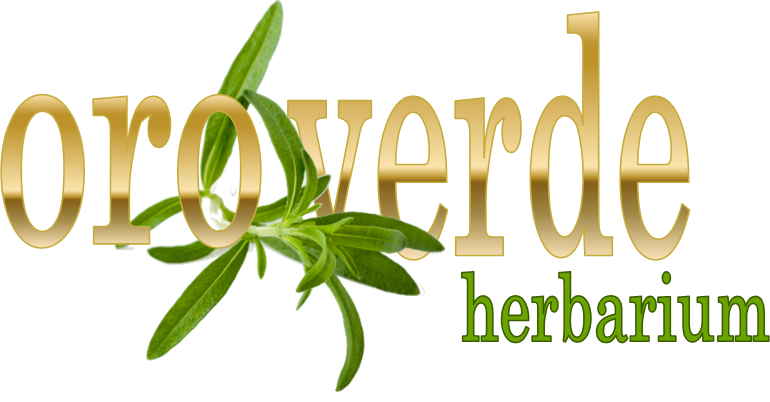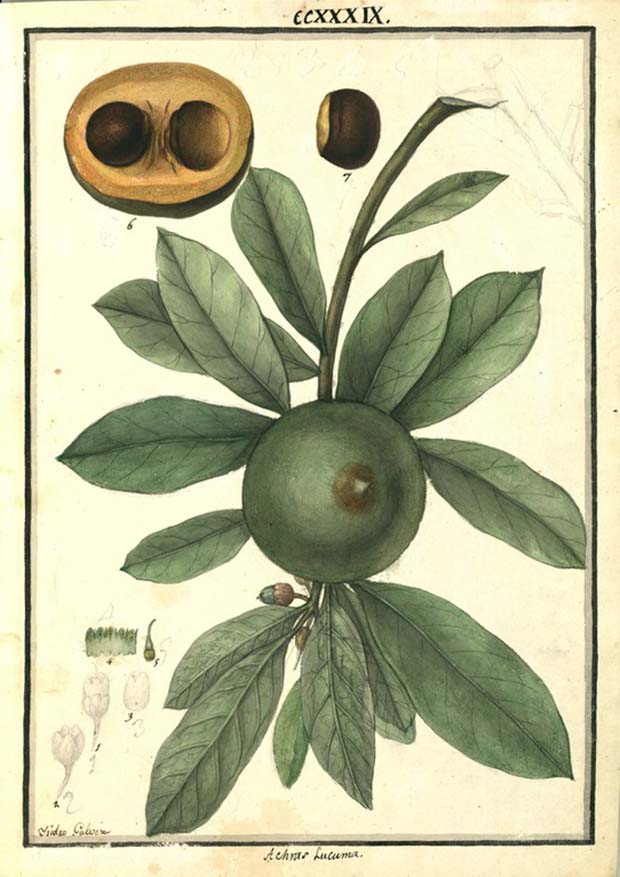It affects the following diseases:
Family: Sapotaceae
Genus: Pouteria
Species: lucuma (Ruiz & Pav.) Kuntze
Synonyms: Achras lucuma Ruiz & Pav., Lucuma bifera Molina, L. biflora J. F. Gmel., L. obovata Kunth, L. turbinata Molina, Pouteria insignis Baehni, P. macrocarpa Huber (Baehni), Richardella lucuma (Ruiz & Pav.) Aubrév
Native names : lucuma, lúcma, lucma de Brasil, cutite grande, curitibá grande (Brasil), nispero montanero, purguillo negro (Venezuela)
Used part of the plant : fruit
Description:
It is a tree up to 30 m tall and adult in natural conditions reaches a height of 6-20 m. The trunk reaching a diameter of 40 cm is straight and slightly serrated with a cylindrical base. The outer bark is light brown, with an upper surface (ritidoma) that appears in small wooden plates. It is rich in white latex. Simple, alternating leaves without stipules are grouped on the terminal branches. The leaves are leathery, slender, 10-20 cm long and 4-10 cm wide, the base of the leaf is wedge-shaped with solid edges, intact on the cheek, glossy dark green, on the reverse light green, less glossy, with protruding veins. The petiole is bottle-shaped, approximately 2 cm long. The inflorescence consists of bundles of 3 – 10 flowers, which pass to the apex with permanent or deciduous leaves. The flowers are bisexual, with a calyx formed by 4-5 green petals and a white crown consisting of 4-6 petals, contains 46 stamens and an ovary with 5 identical deposits. The fruit consists of a large, oval berry, with a blunt apex, with dimensions of 9-14 cm in diameter and weight from 0.4 kg-1, glabrous skin thin but hard, dark green to brownish color, flesh markedly yellow, soft, floury texture, slightly aromatic, pasty consistency. The fruit usually contains 2-4 hard, shiny, dark brown seeds.
The species is an original habitat from the Ecuadorian and Peruvian valleys, in Peru it has been known and consumed since time immemorial, while exploring the old tombs of the Moche culture, among other seeds, lucuma seeds were found, which testifies to their use by the original inhabitants in pre-incaic times. Some data say that it was grown in the Ancash area for 8000 BC.
The fruits are nicknamed the Inca gold, both for their delicious, sweet hazelnut-vanilla taste and for the content of healthy substances. The fruit is very popular not only in Peruvian, but also in other South American cuisines, where the cultivation of lucuma has spread, it can be consumed raw, it is popularly used to prepare desserts and ice cream. In Chile, the popular dessert “merengue con salsa de lúcuma” in Peru is, for a change, served “dulce con leche” containing puree of lucuma pulp.
Due to the content of simple sugars, it serves as a dietetic and at the same time very tasty and healthy sweetener. The positive effects of consumption of lucuma fruits on human health have been demonstrated in various studies.
A 2008 Brazilian study focused on determining the antihyperglycemic and antihypertensive activity of selected Peruvian fruits. In addition to the fruit species Pacae (Inga feuille), Papayita arequipeña (Carica pubescens), Capuli (Prunus capuli), Aguaymanto (Physalis peruviana), and Algarrobo (Prosopis pallida), the fruit of the lucuma was also studied.
Total phenol content, antioxidant activity demonstrated by the 2,2-diphenyl-1-picrylhydrazyl radical scavenging test and functionality such as in vitro inhibition α-amylase, α-glucosidase and angiotensin I converting enzyme (ACE) relevant for the potential management of hyperglycaemia and hypertension associated with type 2 diabetes were evaluated. The total phenol content ranged from 3.2 (aguaymanto) to 11.4 (lucuma) mg x g-1 dry weight of the sample. A significant positive correlation was found between the total phenol content and the antioxidant activity of ethanol extracts. Aqueous extracts of lucuma and algarroba had the highest α-glucosidase inhibitory activity. Papayita arequipeña and algarrobo had significant ACE inhibitory activities with antihypertensive potential. These in vitro results point to the excellent potential of Peruvian native fruit species to enrich and expand a healthy diet.
A Chilean study from 2015 focused on the content of substances and their biological activity in different varieties of lucuma (Rosalia, Montero and Leiva 1) showed the presence of primary metabolites (sugars and organic acid) and secondary metabolites (phenols and carotenoids) and their in vitro antioxidant and hypoglycemic Properties. Although significant differences in the amount of substances were identified between varieties (119.4-344 mg sugars; 44.4-30.0 mg organic acids; 0.35-1.07 mg vitamin C; 0.7-61.6 mg total phenols and 0.22–0.50 mg β-carotene (all data per 1 g of pulp), all varieties have been shown to demonstrate in vitro significant antioxidant and hypoglycaemic properties, which provide a basis for standardization of lucuma harvest and post-harvest technologies aimed not only at improvement of sensory but functional properties.
Lucuma is particularly rich in polyphenolic compounds, which have strong anti-aging, anti-inflammatory and antioxidant effects. Thanks to this high content of antioxidants, lucuma fruit can help reduce the incidence of diabetes, cardiovascular disease and other chronic health conditions.
The dihydrocaempferol glycosides contained in lucuma are important flavonoid compounds with anti-inflammatory activity that play a role in wound healing and the contribution of fruit to skin regeneration. It has also been reported that this compound stimulates insulin, which regulates glucose metabolism, thereby helping to improve the conditions in diabetes.
Lucuma, on the other hand, also contains gallic acid, which stimulates the formation of new blood vessels, helps regulate blood pressure and is a tool for cardiovascular function.
The pleasant sweetness and delicate taste of lucuma is caused by a combination of sugars, namely glucose, fructose, sucrose and inositol. In particular, the glycoside inositol plays a key role in the metabolic action of insulin, thereby helping to regulate glucose levels in the human body.
In addition, lucuma seed oil contains omega-6 and omega-9 fatty acids, which have hypotensive properties and help with protein production. These two main active ingredients of the oil alleviate itching and drying of the skin, which determines its use in cosmetics.
| sustance | quantity | % RDD |
| β-karoten | 383 mg | 7 |
| B1 thiamin | 0,01 mg | 1 |
| B2 riboflavin | 0,14 mg | 11 |
| B3 niacin | 1,96 mg | 1 |
| Vitamin C | 2,2 mg | 2 |
| Phosphorus (P) | 26 mg | 2 |
| Eisen (Fe) | 0,4 mg | 2 |
| Kalzium (Ca) | 16 mg | 1 |
| Protein | 15 g | 30 |
| Fiber | 13 g | 52 |
| Carbohydrate | 25 g | 6 |
Werte bezogen auf den Gehalt in 100 g Fleisch
ETD = empfohlene Tagesdosis
Source:
FUENTEALBA, C.; GÁLVEZ, L.; COBOS, A.; OLAETE, J.A.; DE FILIPPI, B.G.; CHIRINOS, R.; CAMPOS, D.; PEDRESCHI, R. Characterization of main primary and secondary metabolites and in vitro antioxidant and antihyperglycemic properties in the mesocarp of three biotypes of Pouteria lucuma. publ.in Food Chem. 2016 Jan 1;190:403-411. DOI: 10.1016/j.foodchem.2015.05.111. Epub 2015 May 28.
PAITÁN FLORES, S. CULTIVO DE FRUTALES NATIVOS AMAZONICOS, GEF, PNUD, Iquitos, Perú, 1997, 337 s.
PINTO, MDA.S.; RANILLA, L.G.; APOSTOLIDIS, E.; LAJOLO, F.M.; GENOVESE, M.I.; SHETTY, K. Evaluation of antihyperglycemia and antihypertension potential of native Peruvian fruits using in vitro models. publ. in J Med Food. 2009 Apr;12(2):278-91, PMID: 19459727 DOI: 10.1089/jmf.2008.0113














